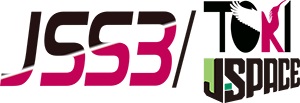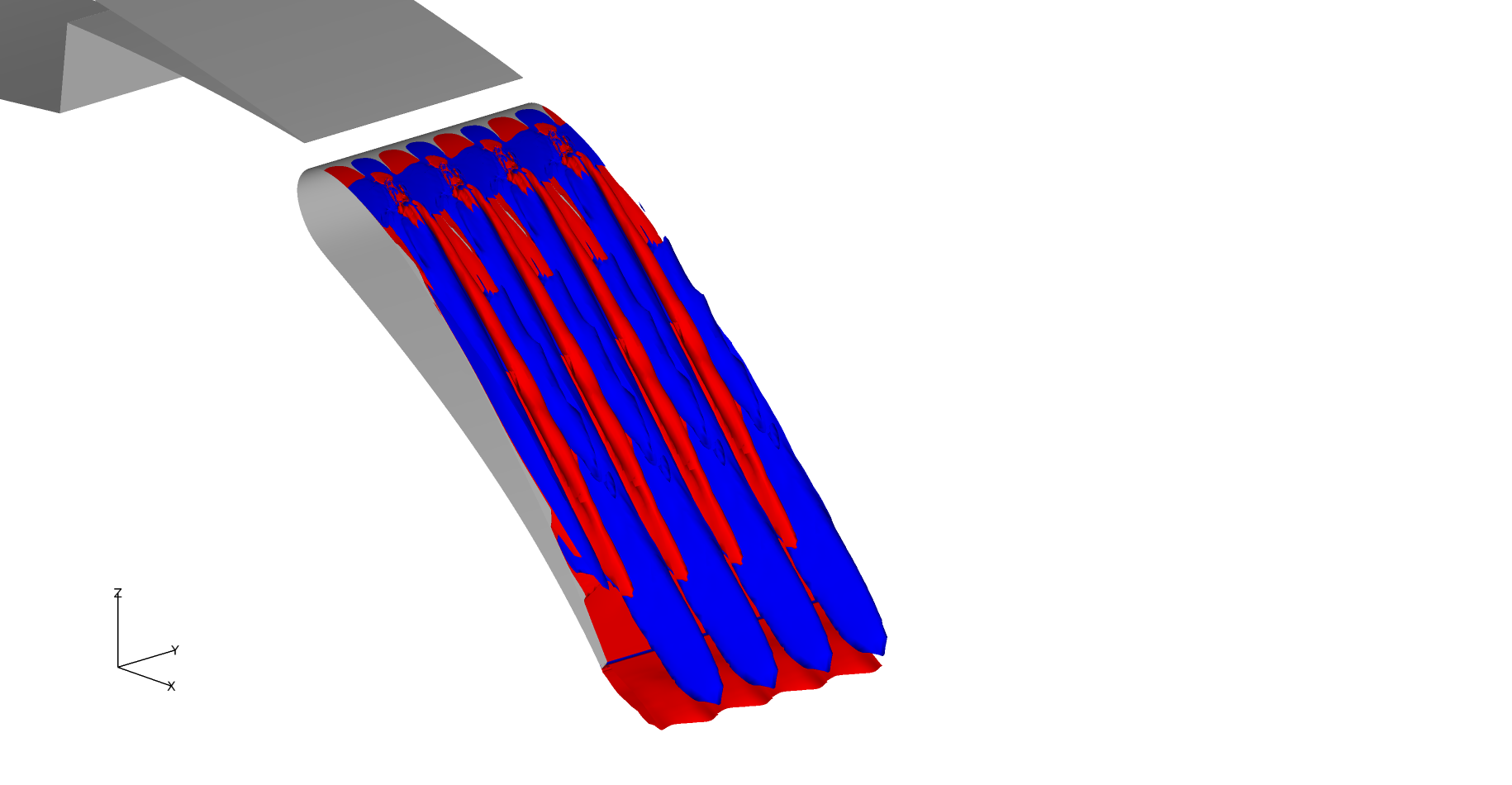Development of vortex generator layout design guidelines for improving aircraft performance by using vortex generators
JAXA Supercomputer System Annual Report April 2020-March 2021
Report Number: R20EDA201A01
Subject Category: Aeronautical Technology
- Responsible Representative: Shigeru Hamamoto, Aerodynamics Research Unit, Aeronautical Technology Directorate
- Contact Information: Yasushi Ito, Aviation Systems Research Unit, Aeronautical Technology Directorate(ito.yasushi@jaxa.jp)
- Members: Yasushi Ito, Hiroya Toriida, Tohru Hirai
Abstract
The installation of vortex generators (VGs) in an aircraft is mainly used as a solution to problems that require performance improvement during the flight test phase, and its placement is often determined by trial and error during the flight test. The objective of this research is to improve the current VG layout and design technology, which is only a quick solution to problems that occur in the flight test phase, so that it can be incorporated into aerodynamic design that actively utilizes VGs from the conceptual design phase.
Reference URL
Please refer to http://www.aero.jaxa.jp/eng/research/basic/application/ .
Reasons and benefits of using JAXA Supercomputer System
Computational simulations using the JSS reveal detailed physical phenomena of vortex generators, which is difficult only with wind tunnel tests, and enable to improve the design of the devices.
Achievements of the Year
Reynolds-averaged Navier-Stokes simulations were conducted using the TAS code with and without VGs on an infinite wing with a 30P35N airfoil, which was defined from the 30P30N airfoil by increasing the flap deflection angle to 35 degrees to enhance a boundary layer flow separation on the flap. An extruded volume grid was generated from a two-dimensional hybrid grid using MEGG3D software to ensure the regularity of the grid in the spanwise direction. We confirmed that VGs can suppress the flow separation even with a relatively coarse grid (Fig. 1). We plan to extend the method to three-dimensional complex aircraft models to generate unstructured hybrid meshes with some regularity.
Publications
– Peer-reviewed papers
1) Ichikawa, Y., Koike, S., Ito, Y., Murayama, M., Nakakita, K., Yamamoto, K., and Kusunose, K., “Size Effects of Vane-Type Rectangular Vortex Generators Installed on High-Lift Swept-Back Wing Flap on Lift Force and Flow Fields,” Experiments in Fluids, accepted.
Usage of JSS
Computational Information
- Process Parallelization Methods: MPI
- Thread Parallelization Methods: Automatic Parallelization
- Number of Processes: 324
- Elapsed Time per Case: 72 Hour(s)
Resources Used(JSS2)
Fraction of Usage in Total Resources*1(%): 1.19
Details
Please refer to System Configuration of JSS2 for the system configuration and major specifications of JSS2.
| System Name | Amount of Core Time(core x hours) | Fraction of Usage*2(%) |
|---|---|---|
| SORA-MA | 7,211,148.06 | 1.36 |
| SORA-PP | 7,246.43 | 0.06 |
| SORA-LM | 488.33 | 0.29 |
| SORA-TPP | 0.00 | 0.00 |
| File System Name | Storage Assigned(GiB) | Fraction of Usage*2(%) |
|---|---|---|
| /home | 3.49 | 0.00 |
| /data | 1,603.09 | 0.03 |
| /ltmp | 713.64 | 0.06 |
| Archiver Name | Storage Used(TiB) | Fraction of Usage*2(%) |
|---|---|---|
| J-SPACE | 2.20 | 0.07 |
*1: Fraction of Usage in Total Resources: Weighted average of three resource types (Computing, File System, and Archiver).
*2: Fraction of Usage:Percentage of usage relative to each resource used in one year.
Resources Used(JSS3)
Fraction of Usage in Total Resources*1(%): 3.09
Details
Please refer to System Configuration of JSS3 for the system configuration and major specifications of JSS3.
| System Name | Amount of Core Time(core x hours) | Fraction of Usage*2(%) |
|---|---|---|
| TOKI-SORA | 16,999,776.28 | 3.66 |
| TOKI-RURI | 8,413.18 | 0.05 |
| TOKI-TRURI | 0.00 | 0.00 |
| File System Name | Storage Assigned(GiB) | Fraction of Usage*2(%) |
|---|---|---|
| /home | 4.12 | 0.00 |
| /data | 1,703.50 | 0.03 |
| /ssd | 41.04 | 0.02 |
| Archiver Name | Storage Used(TiB) | Fraction of Usage*2(%) |
|---|---|---|
| J-SPACE | 2.20 | 0.07 |
*1: Fraction of Usage in Total Resources: Weighted average of three resource types (Computing, File System, and Archiver).
*2: Fraction of Usage:Percentage of usage relative to each resource used in one year.
JAXA Supercomputer System Annual Report April 2020-March 2021



